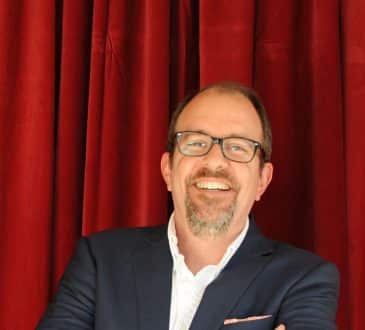Four Shifts for World-Class Teams to Thrive in a Fast-Changing World

Forget what you thought you knew about leading teams—old ideas no longer apply in a world of remote work, artificial intelligence, and constant disruption. In fact, just 15% of the world’s most successful companies have engineered a totally new way of collaboration. To win in today’s volatile world, you cannot think your way into a new way of acting. World-class teams adopt what we call “teamship practices” – simple, repeatable actions that turn mindset and behavioral shifts into daily habits. These practices have been instrumental in transforming teams across various industries and scales. Let’s explore the four key shifts and the practices that bring them to life.
Shift 1: Embrace Teamship—The New Frontier of Leadership
The first shift requires moving from traditional leadership to what we call teamship, the ultimate competitive advantage in today’s world. Teamship is driven by:
(A) Shifting from traditional hierarchies to teammates co-leading teams and elevating each other to achieve world-class performance; and
(B) Shifting from standard working habits to inclusive twenty-first-century collaboration practices, processes, and tools to achieve bolder innovation and faster decision-making.
One of the core practices of Teamship is called Stress Testing. Stress Testing does; it turns an old, dilapidated habit into a culture change magic wand.
From Passive Listening to Engaged Peer Feedback
The mindset developed by Stress Testing is challenging, curious, innovative, and supportive to offer help.
Positioning: Stress Testing must be positioned as in service to the person, not throwing them under the bus. Also important to point out that traditionally, feedback came with the expectation of compliance, delivered by authority figures like parents, teachers, or bosses. In contrast, peer feedback in Stress Testing is offered and received as data, without the presumption that it must be acted upon. This clear positioning shift reduces the emotional charge often associated with feedback and opens up more honest, productive discussions. Peer feedback is not the same as authority feedback. We are not dictating to a person. We’re not hijacking their authority to make a decision.
Preparing to be Engaged: Everybody knows in advance that they are being asked to shift from their normal passive listening to be responsible for attentive, leaned-in, engaged and active listening: they will be asked to comment, challenge, give ideas and offer thoughts on how they might help.
The New Presentation: The person who used to put together a 20-page report out now only puts together a one-page summary in a deliberate and purposeful fashion:
- Achievements: The first set of bullets on the page is what this initiative has achieved so far, demonstrating what has been done, achieved, and succeeded with as many metrics as possible to validate the outcomes.
- Struggling: The second column is what they’re struggling with. The importance of this is that typically, those 20-page walkthroughs do not share what the team has been or is struggling with, as they tend to showcase the progress and good things only.
- What’s next: The third part of the opening presentation is where they’re planning to go next. What is the next sprint of work they are planning to focus on? This gives the group some line of sight to what’s coming ahead and directs where people can offer ideas or identify possible risks and places where others can help.
Those three simple things should be reported on, sent in advance (potentially in a video), and briefly reviewed in the room for five to 10 minutes only. This new practice also introduces the presumption that everybody will have done homework in advance to have a point of view on that report out before they get into the room. With some teams, asynchronous pre-work can take some time to re-condition.
Assigning the Team’s Challenge Response: As this new version of reporting the status of an initiative is being conveyed, people listen attentively because they expect to be active participants in the forthcoming discussion. When it is done, we will not conduct the conversation in the standard one-room casually chirping in the style of a typical meeting in one large group. Our research shows that in a typical meeting of 12 people, only four voices are heard. We are going to adopt a practice of moving to small breakout groups of three people, where we know the psychological safety goes up significantly. In the breakout groups, they open a shared document that all can see what each group is writing, and each group writes down these simple three responses to what they heard: challenges/risks, ideas/innovations and offers of help. This is the crucial step because we want to make sure that real considered deliberation is had, and the feedback is captured.
Breakout sessions can vary in length depending on the complexity of the problem but typically, 20 minutes is more than enough. When the breakout groups return to the main meeting, they can report back, but the person who owns the initiative has each group’s shared document to refer to. Teams need to get used to more detailed feedback in the shared document versus traditional breakout exercises that have robust conversation and moderate report backs.
The Presenter Reaction: Yes/No/Maybe: The final step is for the initiative owner to reflect and share a “yes, no, maybe” response to the suggestions and ideas with those who participated. “Yes—I’m going to do this. No—and here’s why not. Maybe—I’ll consider this and do more research.” Remember the owner of the initiative still owns the analysis of the advice and data. The group has not rested control of the initiative form the owner; they are just giving unbridled feedback to assure this person succeeds.
Replacing old report outs with Stress Testing is just one new cultural practice called for in today’s work world.
Shift 2: Confront Conflict—Turn Avoidance into Advantage
The second shift involves confronting conflict avoidance head-on and prioritizing candor. In the new world of work, avoiding conflict isn’t just unproductive, it’s dangerous. Our research shows that 72% of team members avoid conflict, leading to missed opportunities for innovation and unnecessary exposure to risks.
To address this, use the “Yoda in the Room” technique, based on the wise Jedi in the Star Wars saga:
- Designate one or more team members as “Yodas” for each meeting.
- Empower these Yodas to call out “Yoda moment” when they feel something important isn’t being said.
- When called, give the Yoda the floor to speak the hard truth or act as a referee between competing perspectives.
- Encourage all team members to embrace their inner Yoda over time.
This practice creates a culture where speaking up is not just allowed but expected and celebrated.
Shift 3: Engineer Trust—Build the Foundation for Innovation
The third shift focuses on actively engineering trust, particularly personal trust. It’s crucial to understand that trust exists in three forms: professional trust (based on competence), structural trust (based on roles), and personal trust (based on relationships). While all are important, personal trust is the key to unlocking a team’s full potential when you want.
In an era of remote work and diverse, global teams, trust can no longer be left to chance. Shockingly, only 41% of team members believe caring, trusting, and supportive relationships exist with their peers.
To engineer personal trust, implement the “Personal Professional Check-in” (PPC) practice:
- At the start of team meetings, ask: “What’s really going on for you? Where might you be struggling, personally and professionally?”
- Allow each team member 2-3 minutes to share.
- The leader should model the appropriate depth of sharing.
- Encourage empathy and support from other team members.
This practice builds deeper connections and understanding among team members, creating a foundation of personal trust and psychological safety.
Shift 4: Revolutionize Collaboration – Beyond the Meeting Room
The final shift involves revolutionizing collaboration beyond traditional meetings. With teams spread across time zones and an ever-increasing pace of work, relying solely on synchronous meetings—meetings that happen live and in real-time—is no longer viable.
Implement “Decision Boards” to revolutionize collaboration:
- Create a shared document outlining a key decision to be made.
- Include sections for context, options, and key questions.
- Give team members 48-72 hours to add their thoughts, concerns, and suggestions asynchronously.
- Use the collected input to either make a decision or shape the agenda for a focused, efficient meeting.
This practice allows for broader input, more thoughtful contributions, and better use of synchronous meeting time. Effectively, Decision Boards are one in a series of asynchronous teamship practices that can help to shift whole cycles of collaboration ahead of a traditional meeting.
The billion-dollar opportunity
The truth is that businesses are leaving billions of dollars on the table by failing to optimize their most valuable asset: their teams. These four shifts are part of ten shifts from leadership to teamship that I have outlined in my new book, “Never Lead Alone.” These aren’t just nice-to-haves – they’re essential for survival and success in today’s business environment. Organizations that cling to outdated team models will find themselves outpaced, outinnovated, and ultimately obsolete.
As leaders, our role is to create the conditions for our teams to thrive in this new world. By implementing these principles and teamship practices, you’re not just optimizing your current operations; you’re future-proofing your organization for whatever challenges lie ahead.
The business world has changed. It’s time for our approach to teamwork to change with it. By embracing these four shifts and the teamship practices that support them, you can unlock unprecedented levels of innovation, agility, and performance in your organization. The question is not whether you can afford to make these changes, but whether you can afford not to.
Written by Keith Ferrazzi.
Have you read?
World’s Most Fashionable Countries.
Best Non-Native English Speaking Countries In The World.
Countries With The Largest Household Size.
World’s Best (And Worst) Countries For Older People To Live In.
Bring the best of the CEOWORLD magazine's global journalism to audiences in the United States and around the world. - Add CEOWORLD magazine to your Google News feed.
Follow CEOWORLD magazine headlines on: Google News, LinkedIn, Twitter, and Facebook.
Copyright 2025 The CEOWORLD magazine. All rights reserved. This material (and any extract from it) must not be copied, redistributed or placed on any website, without CEOWORLD magazine' prior written consent. For media queries, please contact: info@ceoworld.biz











